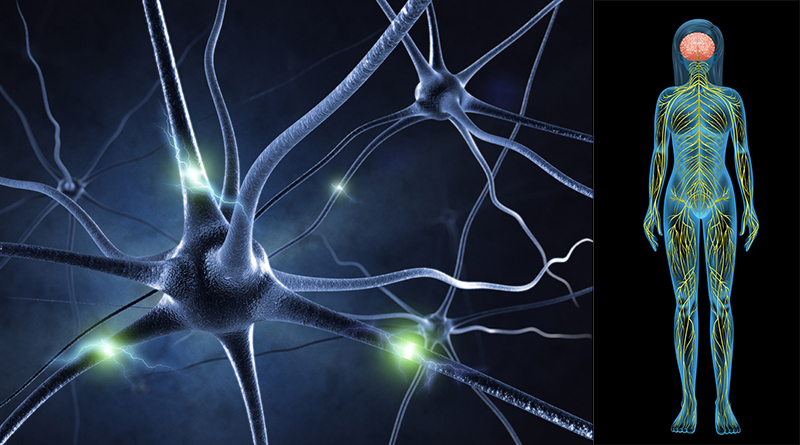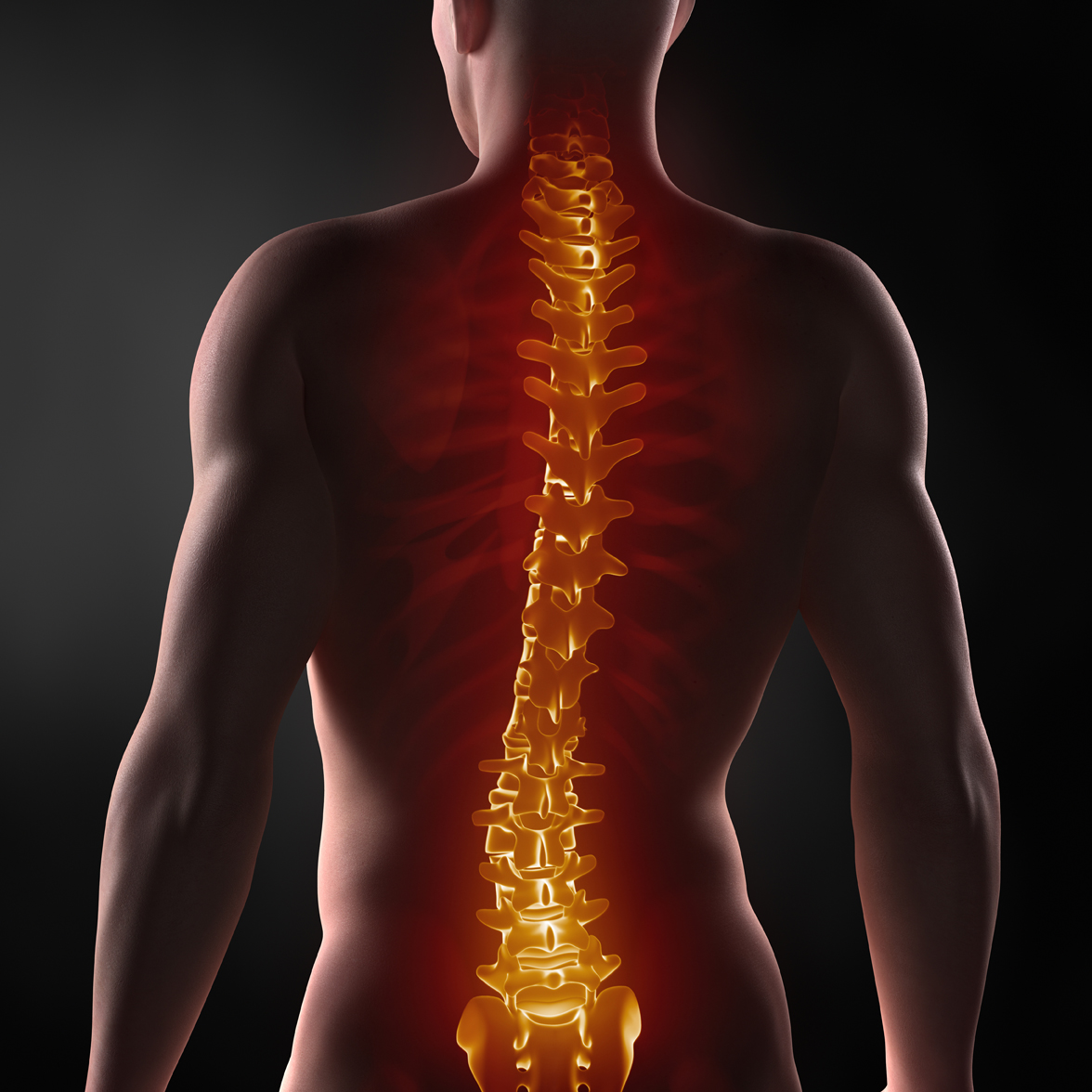Why Chiropractic?
The central nervous system is an incredibly complex system comprised of the brain and spinal cord. The brain alone contains an average of 100 billion neurons (100,000,000,000). The sheer volume of information being shared between the brain and body via the spinal cord, which contains 1 billion neurons (1,000,000,000), is astounding. Even in a resting state, all of these neurons are firing many times per second. This communication controls every organ and organ system to create health and homeostasis. Every subconscious function is coordinated. From the hair standing up on your forearm, to your blood pressure fluctuating, to your immune system determining if something is a threat, is all controlled, and continually monitored, by your central nervous system. Not surprisingly, even a small DIS-ruption in this vital flow of communication can lead to DIS-ease.
One BILLION neurons form the spinal cord. These vital connections relay information constantly between the 100-200 BILLION neurons in the brain and the all the tissues and organs systems of the human body to maintain homeostasis.


The spinal/vertebral column is a flexible and versatile suit of armour protecting the spinal cord and spinal nerves while simultaineously providing a rigid frame to support the skeleton. These complex bones and joints can suffer degenerative and osteoarthritic changes if exposed to traumatic or abnormal postural stresses. A chiropractor is an expert at detecting and treating problems with these vital tissues and can help them last longer and function better!
As a chiropractor one of my primary goals is to help every patient achieve and maintain the healthiest possible spinal and nervous system. By reducing physical and chemical stress on the spinal tissues we can reduce inflammation and spasm. Ultimately, when used correctly, chiropractors can slow and reduce the effects of osteoarthritis and degeneration while enhancing the function of the nervous system.
The back is comprised of 24 vertebrae, the occiput, 24 ribs, the sacrum, the two halves of the pelvis and the coccyx. All of these bones are connected to adjacent structures via ligament, tendon and muscle. The position and movement of these structures is monitored and controlled by the central nervous system. These structures are constantly under stress (postural, chemical, emotional) and will change and adapt as a result.
This ability to adapt to stressors, both external and internal, while maintaining homeostasis is what allows humans to be as successful in so many situations and environments. Any chronic stress results in changes to the body, both at a cellular and whole body level. For example, regularly performing a given exercise (bicep curls) will result in changes at the cellular level that will increase the muscles capacity to do work. The muscle will get stronger at the cellular level, AND the ligamentous, bony and joint tissues associated with it (shoulder, elbow, humerus, shoulder girdle, rotator cuff muscles, spinal stabilizers, etc…), will also adapt and be able to DO more. This phenomenal trait is exploited by body builders around the world.
Unfortunately these adaptive abilities don’t always increase the overall health of the individual. These very same adaptive mechanisms and abilities result health conditions like high blood pressure and high cholesterol (chronic exposure to unhealthy lifestyle choices), fatty changes in the liver (alcohol or excess sugar), and changes in glucose metabolism that lead to diabetes and other “illnesses of aging”. When we chronically immerse ourselves in stressful environments our bodies react to try and maintain homeostasis. These are normal responses to chronically stressful environments.
A great example of adaptions which serve a purpose but reduce the overall fitness and health of the individual is the common 21st century white collar worker. The structure and tissues of the human body require dynamic body position and certain level of physical activity to remain healthy. The human body was not designed/evolved to sit for long periods of time wiggling its fingers. Posture is most efficient and the body maintains a higher level of function when we are standing upright with our ears over our shoulders. The cumulative effect of sitting at a desk, sitting in our vehicles on the way to and from work, sitting on the couch at night, etc. is significant. The body adapts to this by reducing the mobility of specific tissues in the spine to provide more support for sitting posture.
The worse the posture, the higher the strain, the greater the changes.
These cumulative postural changes result in fibrotic changes in and around the joints and muscles of the upper back and neck and affect the normal curvature and biomechanics of the neck region in particular. These changes reduce the ability of the neck and upper back to transmit forces normally which increases the chance of injury from seemingly trivial trauma and increase the chance of significant injury in the event of major trauma (MVA, trip/slip/fall, etc.). This change in the distribution of forces coupled with reduced range of motion also contributes to the early onset of degenerative changes in the spine, osteoarthritis, and degenerative joint and disc disease. These processes often initially occur insidiously and many people just accept the symptoms which eventually arise as “normal aches and pains of aging”. When symptoms do arise they present as chronic tightness and soreness in the traps and upper back, knots in the upper back, neck pain, headache (tension, migraine, cluster), backache, sciatica and lower back pain.

Pain is an important signal from the human body that there may be a problem. Masking pain with medication is like putting a piece of dark tape over the indicator and continuing along the road. The strategy works for a while...
It is important to remember that symptoms like those described above are your body’s way of letting you know there is a problem. Ignoring them works for many for a while. Often people take Ibuprofen, Acetaminophen and other NSAID’s to reduce the symptoms. An analogy I like to make when a patient tells me they take NSAID’s daily to for chronic pain is the “dashboard analogy”. Taking an NSAID regularly to combat recurring pain is like taking a piece of tape and covering the warning light on the dashboard of your car so you don’t notice it anymore. Seeing a chiropractor is more like taking your car in to a skilled mechanic for a checkup to investigate the problem. Despite this, many people choose to ignore the root cause of their problems hoping they will just go away.
Chiropractor’s are specially trained to recognize, diagnose and treat all types of musculoskeletal symptoms, including those relating to unhealthy posture. The chiropractic adjustment is specifically able to break down the scar (fibrotic) tissue in the joints and muscles of these regions and restore range of motion and function. Coupled with restorative postural exercises, chiropractic care can slow down these degenerative changes that are associated with chronic postural stresses and sometimes reverse them.

156 thoughts on “Why Chiropractic?”
Comments are closed.